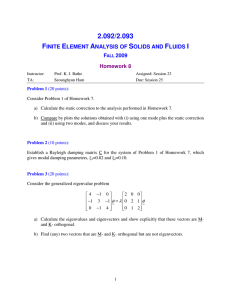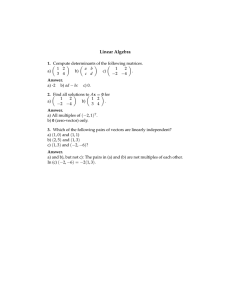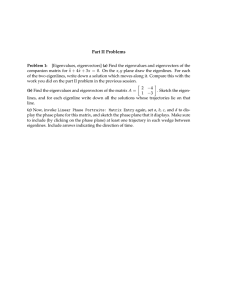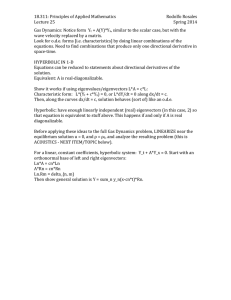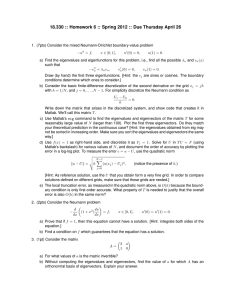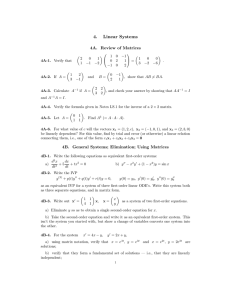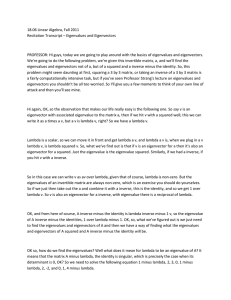Document 13570584
advertisement
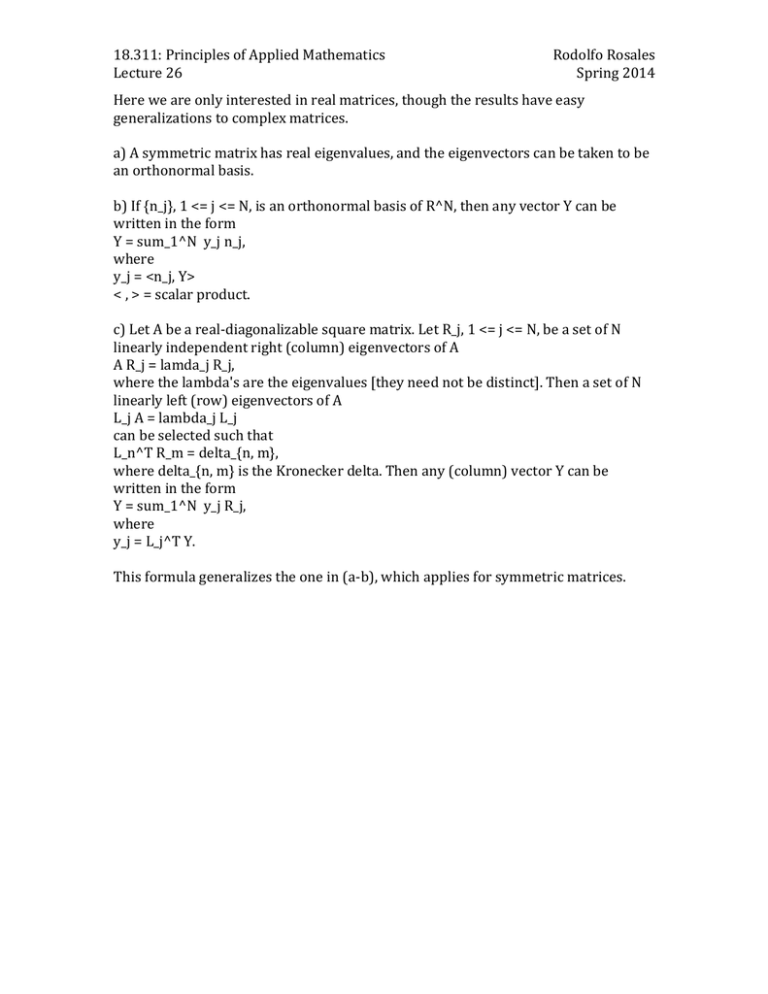
18.311: Principles of Applied Mathematics Lecture 26 Rodolfo Rosales Spring 2014 Here we are only interested in real matrices, though the results have easy generalizations to complex matrices. a) A symmetric matrix has real eigenvalues, and the eigenvectors can be taken to be an orthonormal basis. b) If {n_j}, 1 <= j <= N, is an orthonormal basis of R^N, then any vector Y can be written in the form Y = sum_1^N y_j n_j, where y_j = <n_j, Y> < , > = scalar product. c) Let A be a real-­‐diagonalizable square matrix. Let R_j, 1 <= j <= N, be a set of N linearly independent right (column) eigenvectors of A A R_j = lamda_j R_j, where the lambda's are the eigenvalues [they need not be distinct]. Then a set of N linearly left (row) eigenvectors of A L_j A = lambda_j L_j can be selected such that L_n^T R_m = delta_{n, m}, where delta_{n, m} is the Kronecker delta. Then any (column) vector Y can be written in the form Y = sum_1^N y_j R_j, where y_j = L_j^T Y. This formula generalizes the one in (a-­‐b), which applies for symmetric matrices. MIT OpenCourseWare
http://ocw.mit.edu
18.311 Principles of Applied Mathematics
Spring 2014
For information about citing these materials or our Terms of Use, visit: http://ocw.mit.edu/terms.

